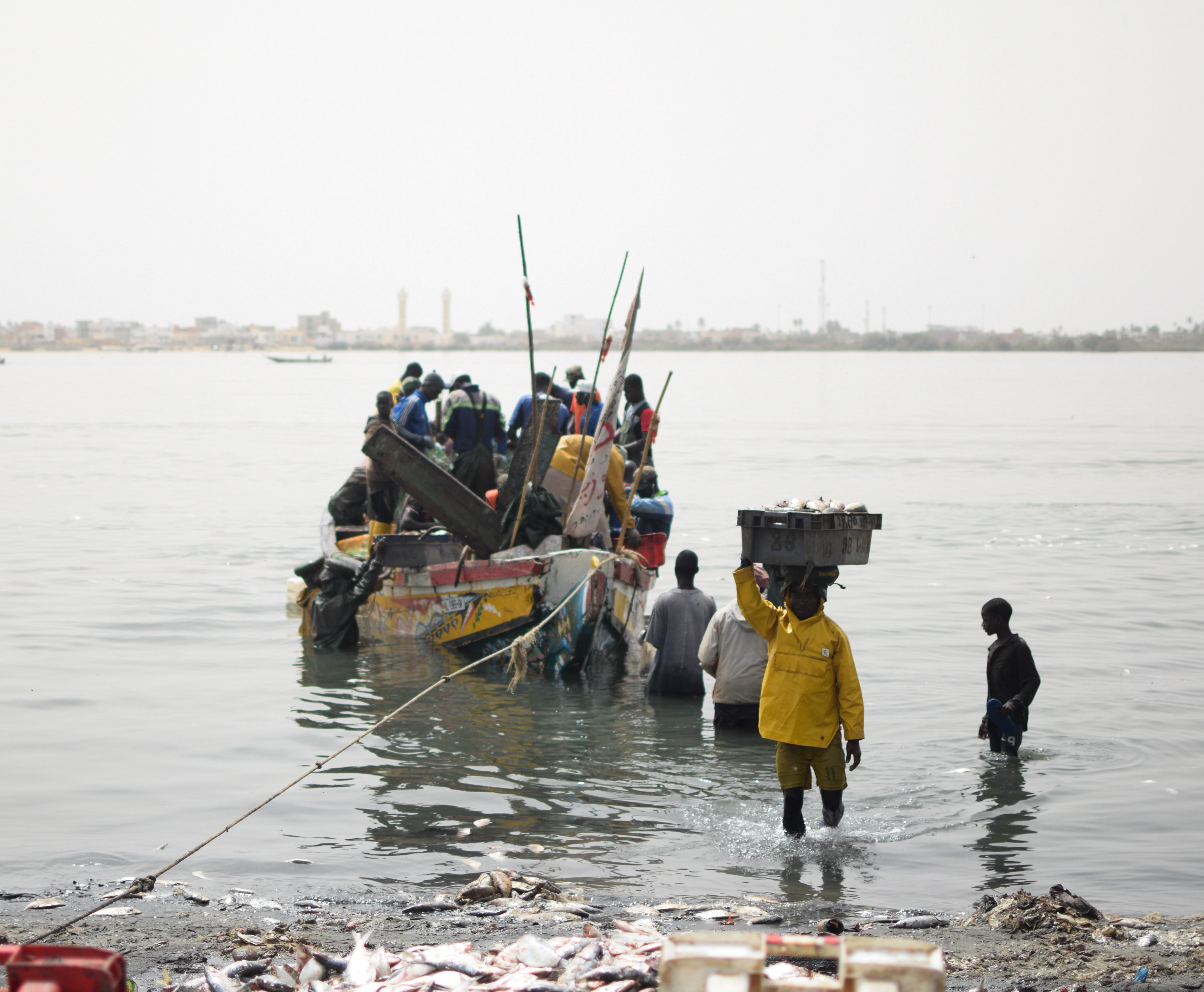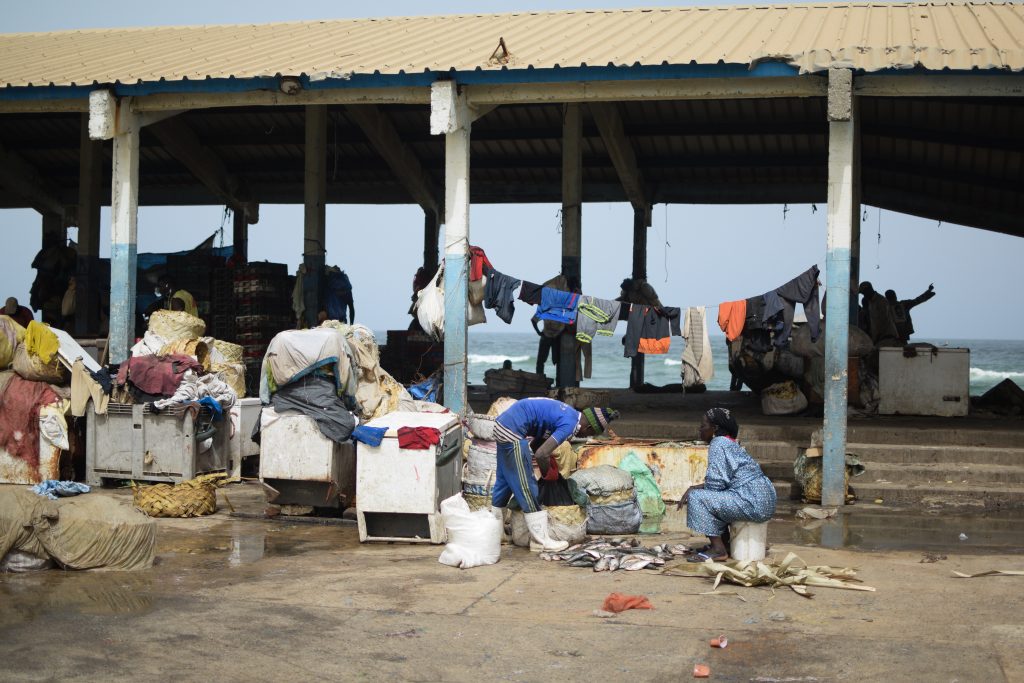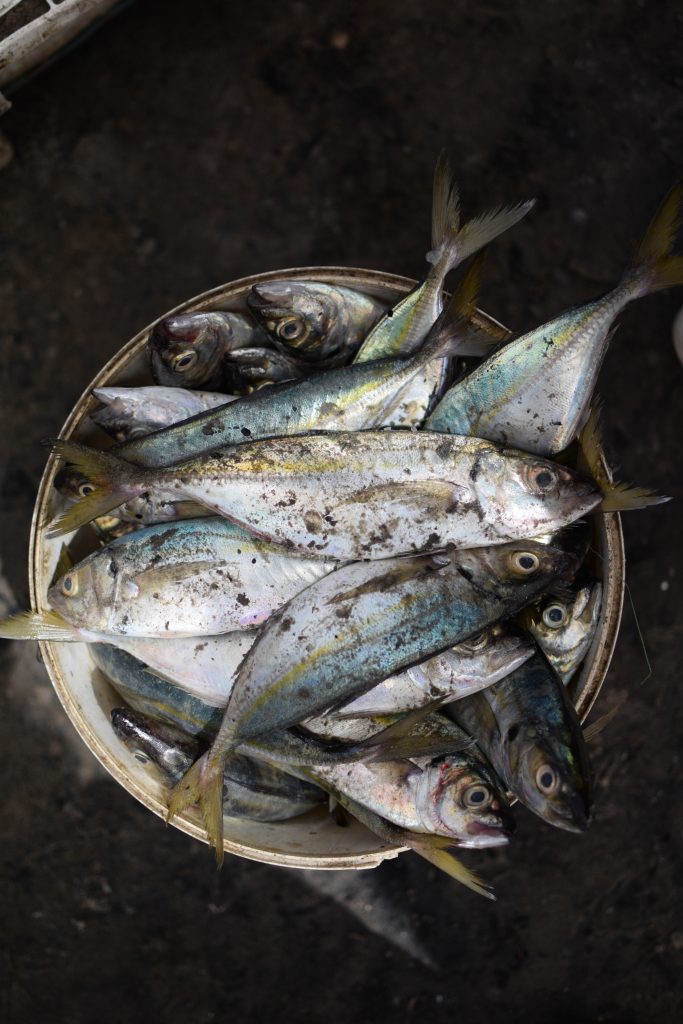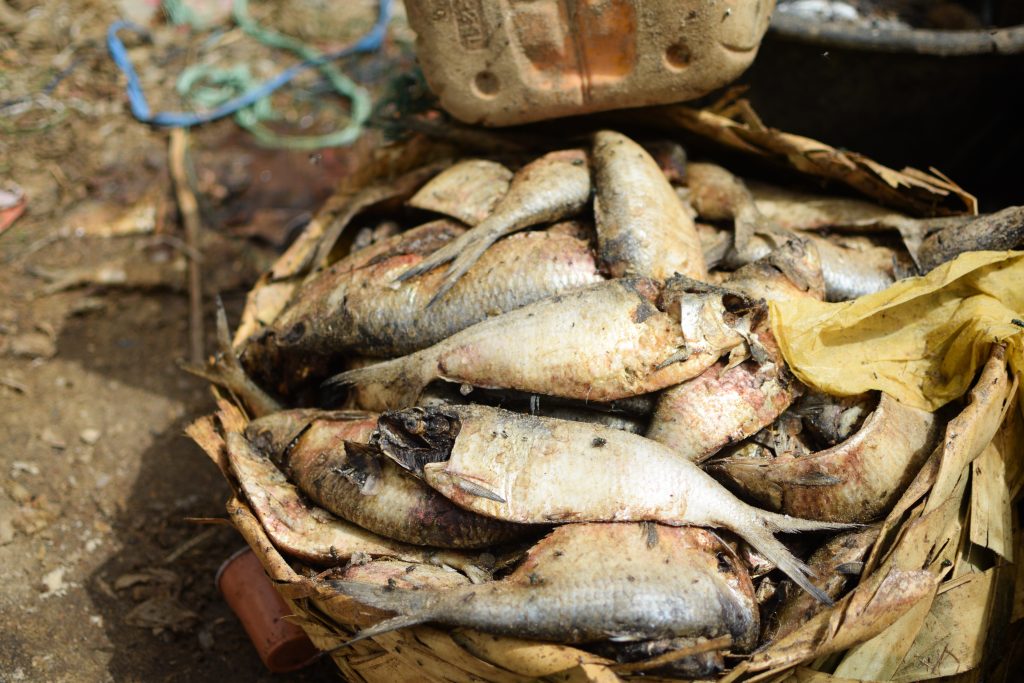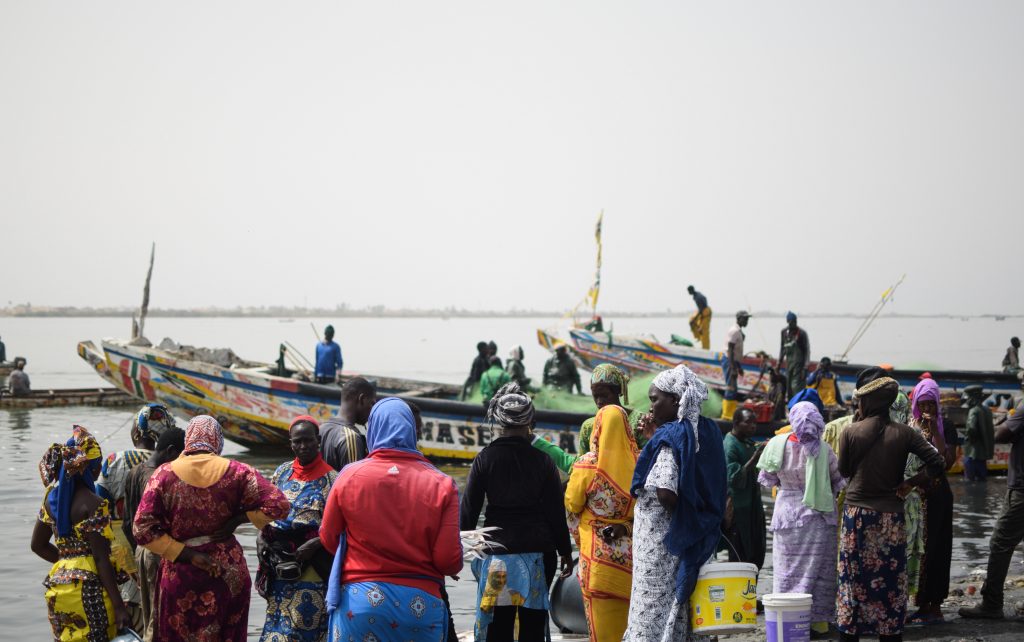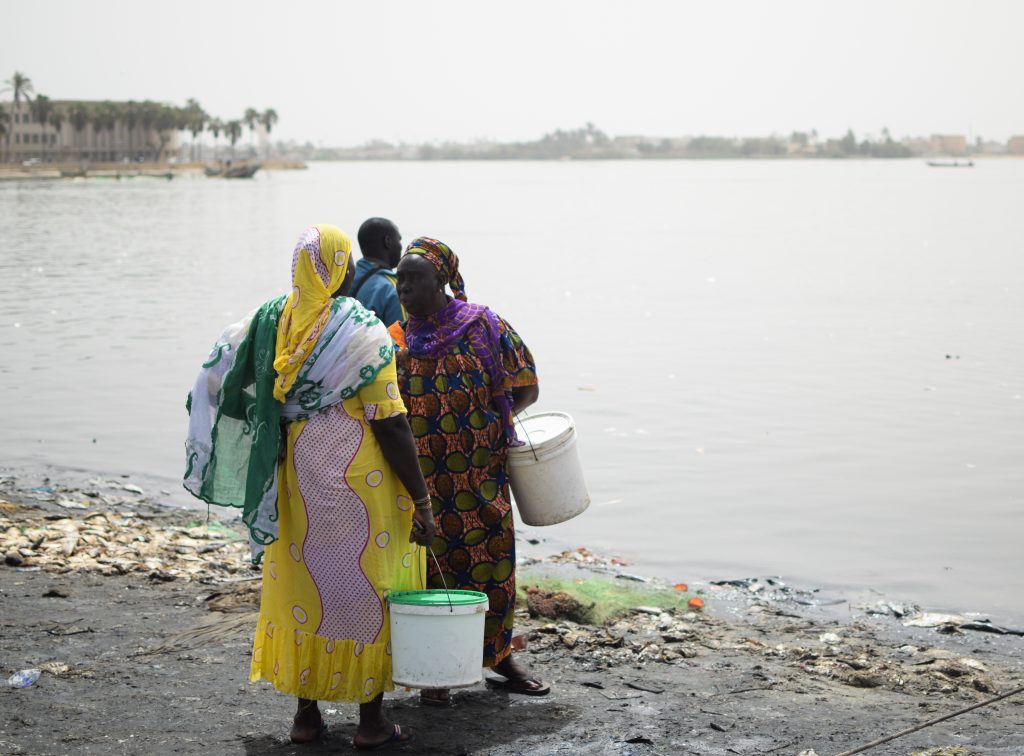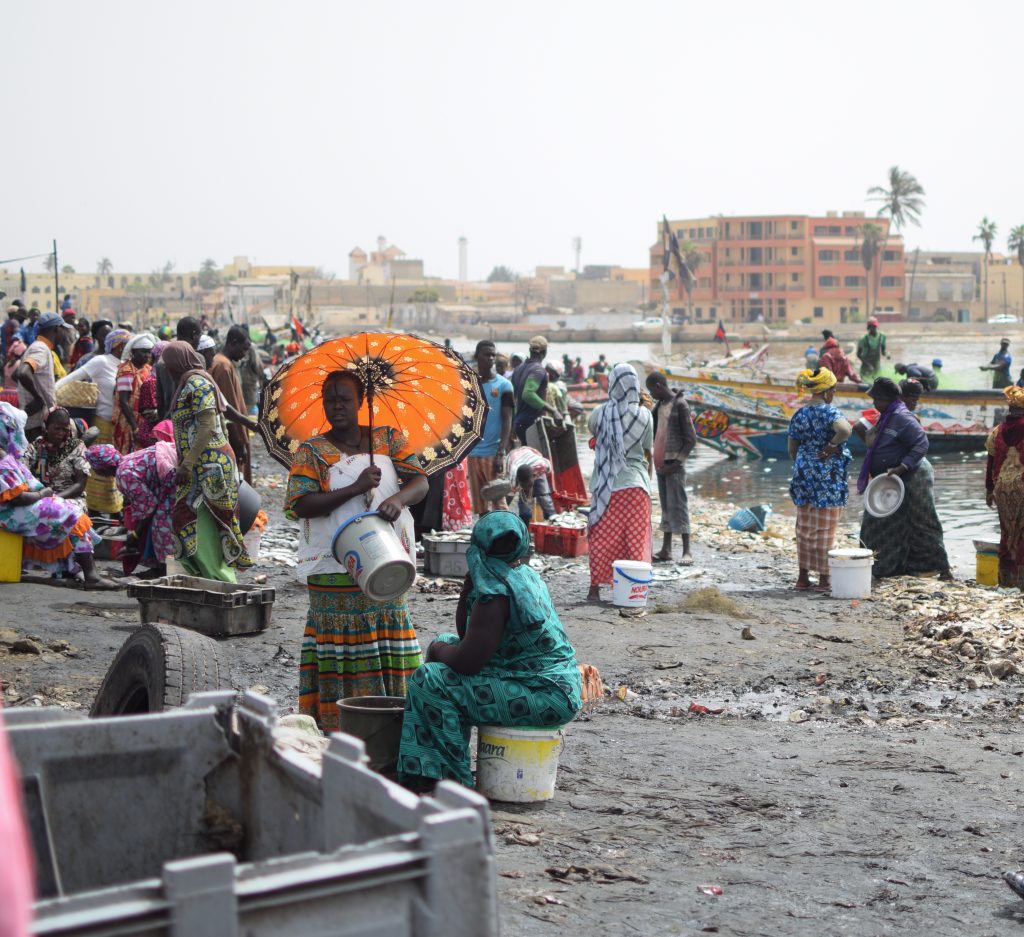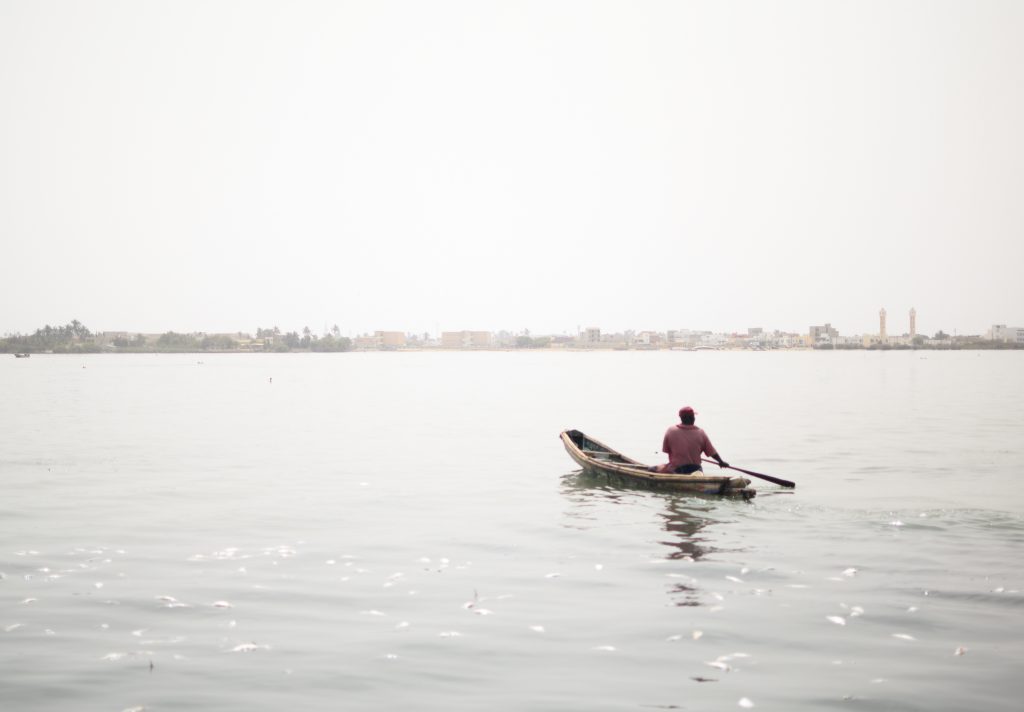During our stay in Senegal, we took a trip to Saint Louis and had a guided tour of the city. A good portion of this tour involved a visit to the fishing district, one of the largest fishing ports in west Africa. We started with the packing and shipping section, and worked our way back to the ocean itself, where it seemed like half of the entire city worked on the pirogues.
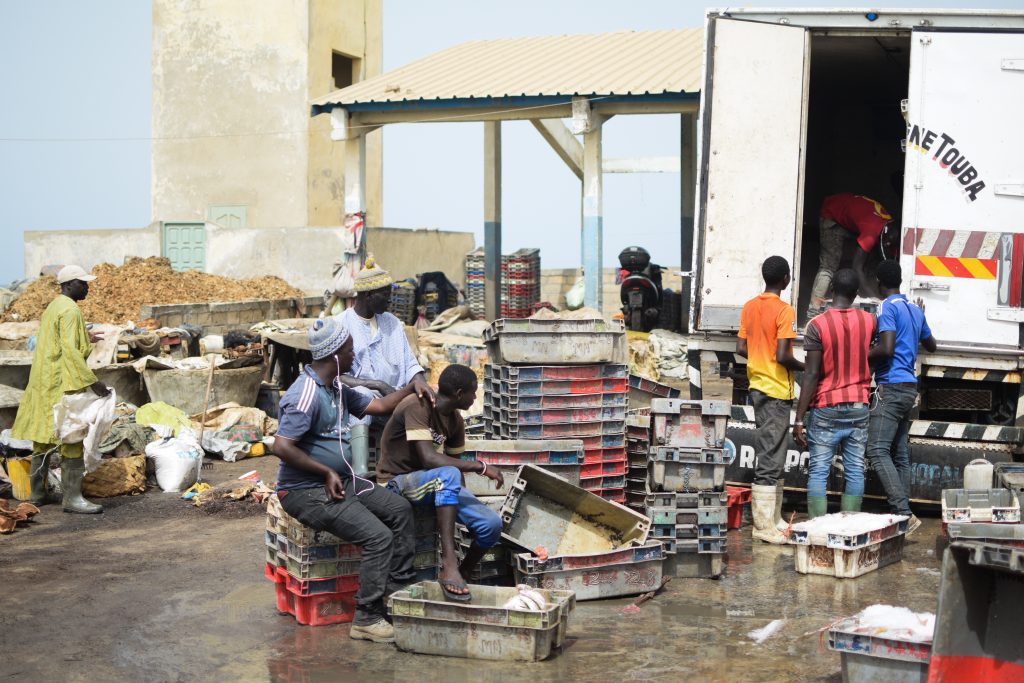
The first thing that hit me was the stench of rotting fish. Though much of the fish is sold fresh, a lot of it is dried before it’s sold, and there were baskets of fish set out in the sun to dry. Unfortunately, a lot of it was starting to spoil. It didn’t help that the area was relatively unclean; there were flies everywhere, unidentifiable fluids running across the ground, and stray animals (dogs, cats, goats, even a couple horses) that did their business right there in on the asphalt.
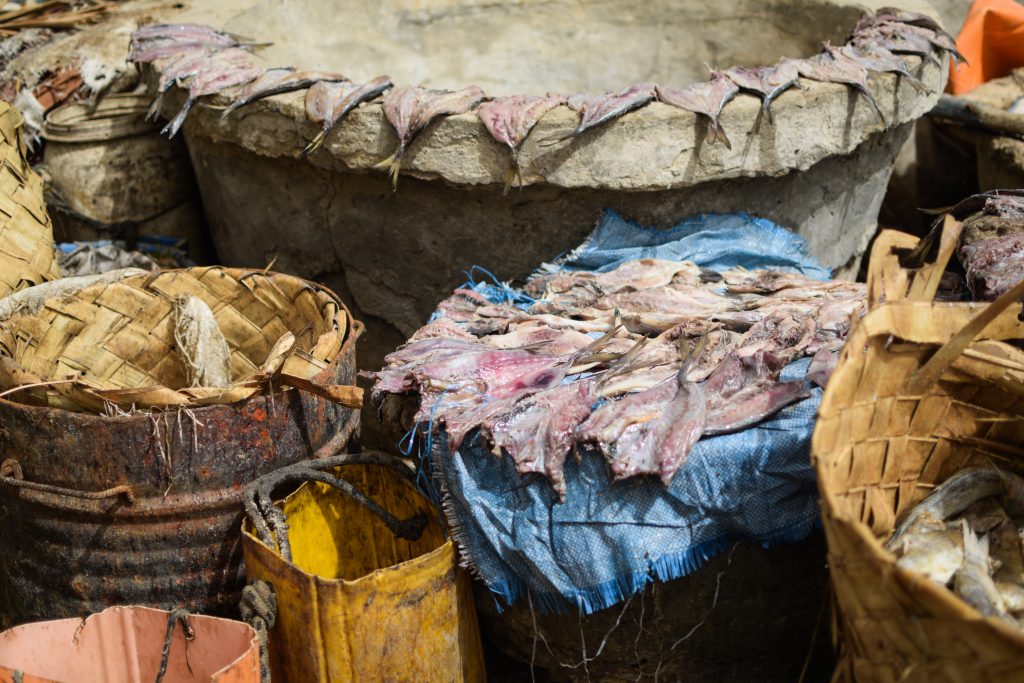
Walking past the baskets of drying fish, we came to the sorting area. More baskets of fish. More smelly water. More flies. We said hello to some of the workers who were cleaning and sorting the fish brought to them, and they were very friendly, though they weren’t too keen on having their photos taken.
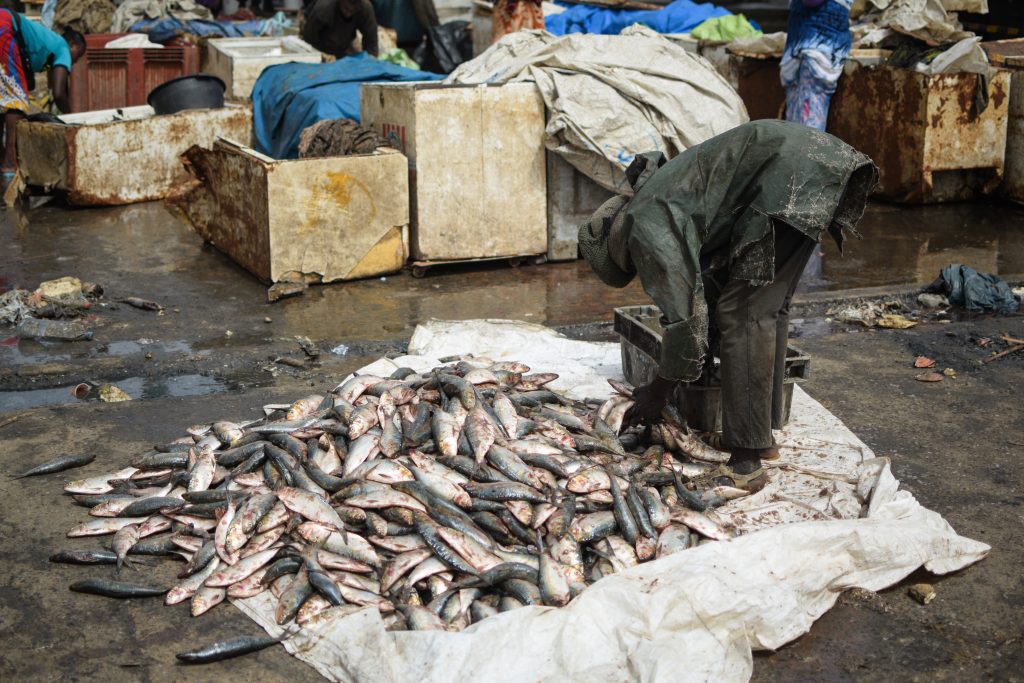
We continued down the path, dodging fishermen and merchants. We saw some live, freshly caught conchs, which was interesting to me because I had just learned about them in last semester’s animal diversity class, so I know how they work and what they look like inside. We also saw a ray, which I didn’t enjoy much because I know that rays aren’t usually caught for their meat but for their gill rakers (especially in China), but then I learned that in Senegal, people do actually eat rays sometimes, which made me feel a little better about it.
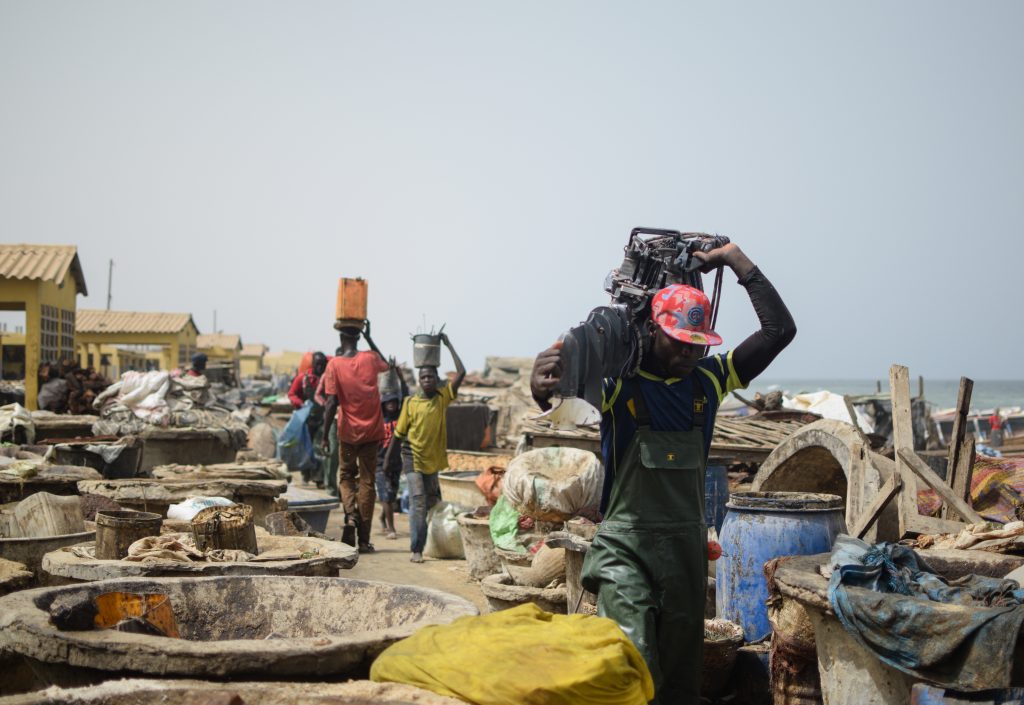
Farther along, we came to the ocean. We walked along it for a while, observing the pirogues, the fishermen, and the small huts for cleaning, preparing, and collecting fish to take to the shipping area. Though the smell had been unpleasant elsewhere, on the ocean shore, it became unbearable. The sand wasn’t visible at all, instead covered in a thick black sludge that I’m convinced was the buildup of dead fish over the years. The water, usually pretty clear on the Atlantic coast of Senegal, was murky and spotted with dead fish, floating belly-up in the tide. I had to alternate taking pictures and watching my feet, because anywhere we stepped, we risked planting our sandaled feet in a rotting tilapia or sardine.
In spite of the unpleasant odor and filth, I’m really glad we went. It was eye-opening for me as far as the state of fisheries in Africa and elsewhere. I’d never visited a fishery before, and though I’d read about them and seen pictures, none of that compares to what you learn and feel while walking through one yourself.
For one, it was easier to understand the scale of the problems with the fishing industry there. Not only are the conditions unclean and unhygienic, mostly because of the inability to keep anything refrigerated, but there is so much waste! There were dead and rotting fish everywhere, just piles of them. Pounds and pounds and pounds of seafood gone to waste, and more still floating in the water. It’s bad enough that there’s wasted food anywhere, but especially in a country that already struggles with poverty, it’s tragic.
However, I must admit that although there are many problems with the fishing industry there, it is the economic base of the country. That’s the main reason why Saint Louis is such a large, beautiful city. Its people have work, because they work at the fisheries. And talking to the fishermen, I got the impression that they were happy, because they felt that they had a worthwhile job that supported them and their families. Since so many people in Saint Louis work at the port, it also creates a sense of community and shared experience, which is so important to the Senegalese people. It’s an integral part of their culture. So, it isn’t all bad.
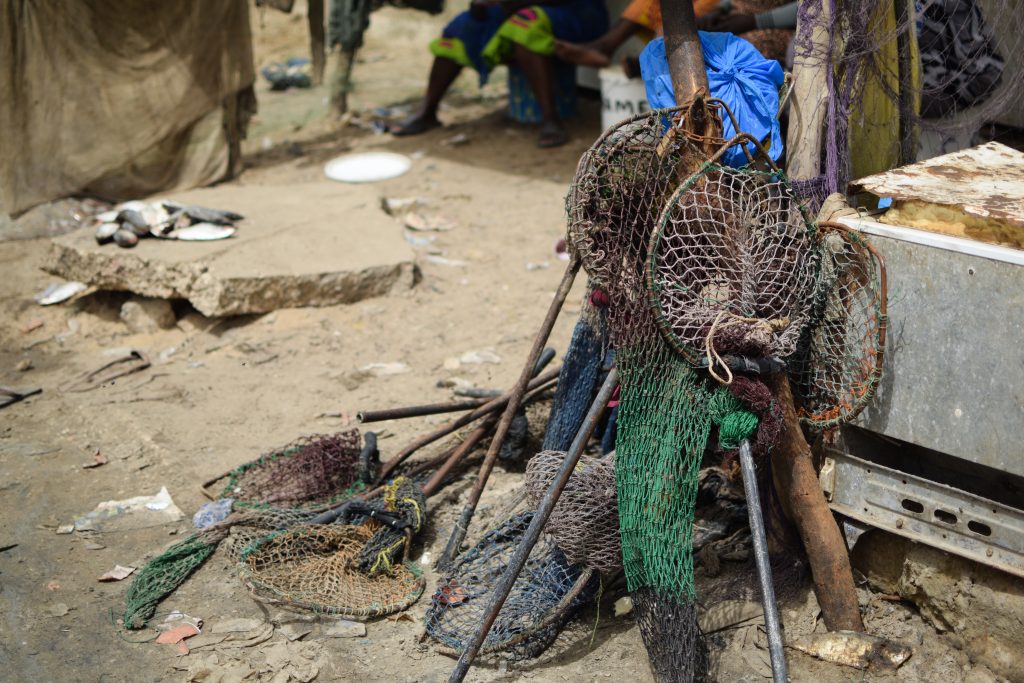
And, you should know, if you visit Saint Louis or anywhere in Senegal and order fish from a restaurant or at a hotel, it won’t be the fish that was left out in the baskets next to the rotting ones. That’s the fish that is sold to local families and street merchants, or shipped elsewhere, while the hotels and moderately to high priced restaurants typically have contracts with independent fishing companies, so you don’t have to worry about getting sick from it. Not that as tourists we deserve better than anyone else, but just so that you know where your fish is actually coming from, depending on where you buy it.
If you go to Saint Louis, I recommend taking a trip to the port. It might not be pleasant, but it’s important to understand the local commerce and livelihood.

